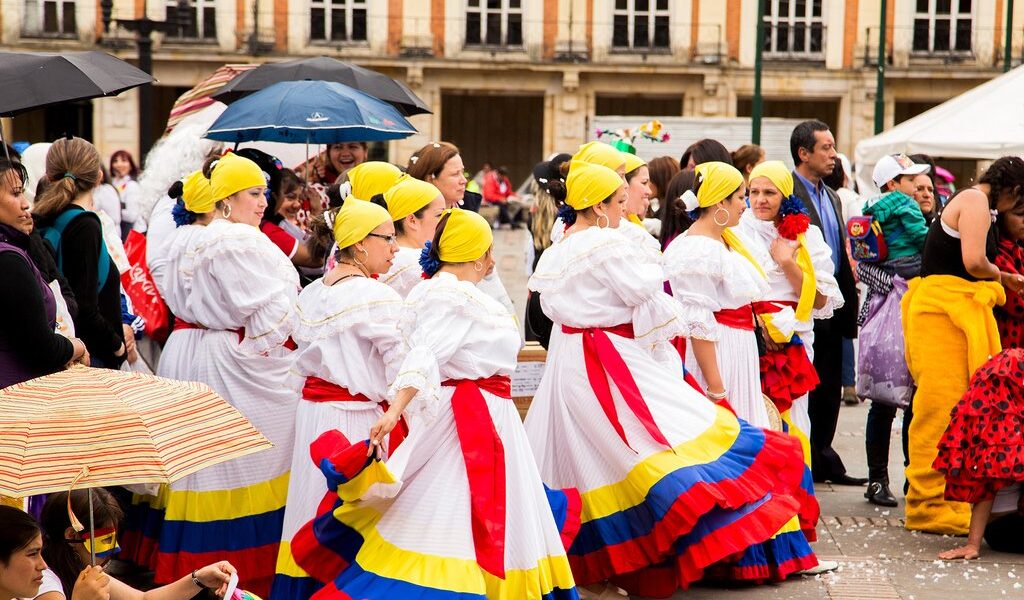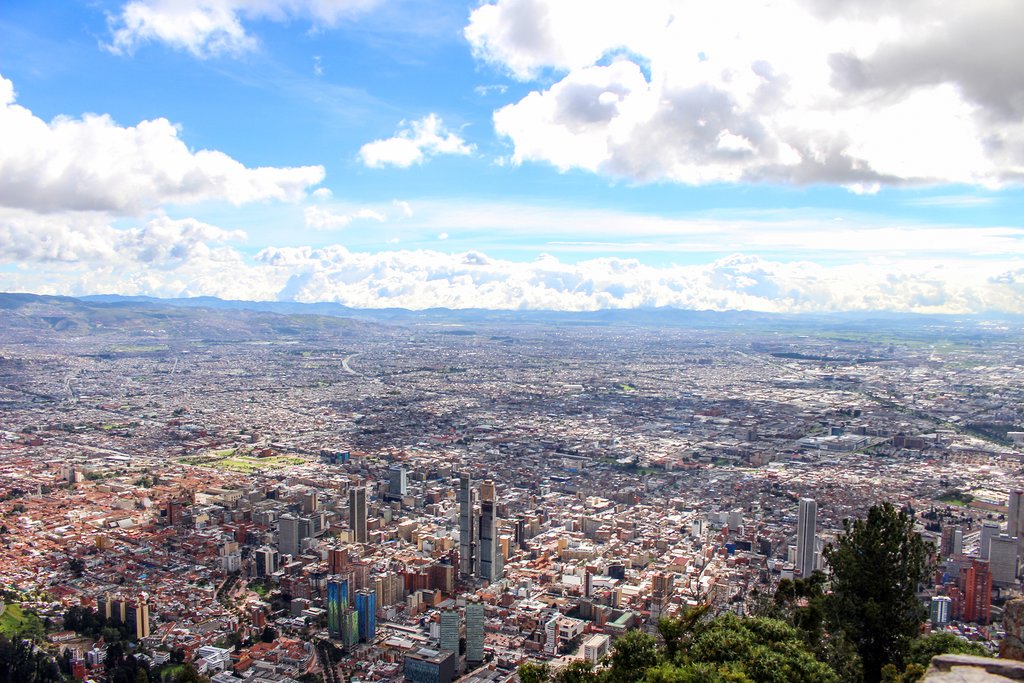
Bogotá has two faces. It is both a bewildering urban sprawl across a South American massif, and a hodgepodge of quaint, colonial-era villages merged together over the centuries. The Colombian capital has an enormous variety of activities and historic sites but requires good insight to navigate the intertwining fabric – use these expert tips to get the most out of your visit.
Chat with a local specialist who can help organize your dream trip to this fascinating country.
Overview
The magnificent capital of Colombia, a bustling metropolis home to approximately 8 million people, is uniquely situated at a considerable elevation of 8860 ft (2640 m) above sea level. It lies nestled within a fertile basin of the breathtaking northern Andes Mountains. This vibrant city serves as the political and economic heart of the entire country, boasting a rich and captivating history that traces all the way back to 1538. That year marks when the city was officially founded by a Spanish expedition, bravely led by the renowned Gonzalo Jiménez de Quesada.
The southern and southwestern sectors of the city are predominantly working-class areas and unfortunately, present limited attractions for the visiting tourist. The majority of the upscale boutique hotels, prominent shopping districts, and diverse entertainment options are strategically located in the affluent northern part of the city. In stark contrast, La Candelaria stands as the truly historic heart of the city. Within La Candelaria, visitors will discover charming cobblestone streets, meticulously preserved historic buildings (some proudly displaying architecture dating back over 300 years), a captivating array of museums, elegant boutique hotels, and vibrant, colorful cafes that beckon exploration and relaxation.
Over the course of the past two decades, the determined city authorities have dedicated significant effort and resources to successfully reduce crime rates, implement enhanced mass transit systems, and diligently clean up previously run-down neighborhoods. As a result of these concerted efforts, Bogotá is now widely recognized as one of the safest and most easily navigable major metropolitan areas in all of South America. Furthermore, the city is continuously striving for improvement, with exciting new developments on the horizon, including a planned above-ground metro system, with the completion targeted for 2022. This new infrastructure promises to further enhance the city’s accessibility and overall appeal to both residents and tourists alike.
Planning Your visit
Once you’ve secured your flights and reserved your hotel accommodations, all that remains is to attend to a few standard procedures that are essential before embarking on any international travel adventure. Ensuring these preliminary steps are addressed will pave the way for a seamless and stress-free journey:
- There are no specific or special vaccinations mandated or explicitly required for entry. However, it is always prudent to ensure that you are entirely up-to-date with your routine immunizations well in advance of your scheduled travel dates. Consult with your healthcare provider for personalized recommendations.
- Prior to your departure, it is imperative to double-check the expiration date of your passport. To avoid any potential complications, ensure that your passport maintains a minimum validity period of six months from your intended date of entry into the country.
- Before you leave, remember to contact your respective credit card company to formally notify them of your impending international travel plans. This proactive measure serves to prevent any unwarranted holds or blocks on your credit card transactions while you are abroad, enabling uninterrupted access to your funds throughout your trip.
Altitude
Bogota is majestically positioned at an elevation of 8860 feet above the prevailing sea level. Upon arrival, you may find yourself experiencing common altitude-related symptoms, such as noticeable shortness of breath, persistent headaches, and a potential loss of appetite. These symptoms are often experienced as your body gradually acclimatizes and adjusts to the elevated altitude. To facilitate a smoother transition, it is advisable to take it easy and avoid engaging in overly strenuous activities or demanding hikes during the initial day of your visit. Consider incorporating some of these practical tips to mitigate the potential for altitude sickness: maintain consistent hydration by drinking plenty of water, prioritize getting sufficient rest and sleep, and opt for a diet that incorporates carbohydrate-heavy foods and nutrient-rich leafy greens.
Weather
Throughout the entire year, temperatures in Bogota typically fluctuate within a range of 45°F to 66°F (7°C to 19°C). It is also quite common to experience cloud cover or a light mist. The periods with the highest levels of rainfall generally occur from April to May and again from October to November. Given these weather patterns, it is highly advisable to pack a versatile selection of clothing, including a lightweight sweater, a reliable rain jacket, a cozy scarf, and comfortable long pants. In addition to these items, be sure to include some lighter clothing options suitable for warmer days, ensuring you are adequately prepared for the varying conditions.
Best Time to Visit
Bogotá is a destination that graciously welcomes visitors throughout the entire year. The weather patterns remain relatively consistent, making it an appealing destination regardless of the specific season. However, it is worth noting that June through August typically marks the high season for both hotels and flights. This surge in tourism is primarily attributable to the increased influx of travelers hailing from North America and Europe, taking advantage of their summer holidays. December stands out as an exceptionally enchanting time to explore the city, largely due to the festive ambiance and the captivating displays of holiday lights that adorn the streets. During the month of December, Cerro Monserrate is beautifully illuminated, creating a stunning visual spectacle and offering a splendid opportunity to visit for panoramic city views that are truly unforgettable.
Festivals & special events
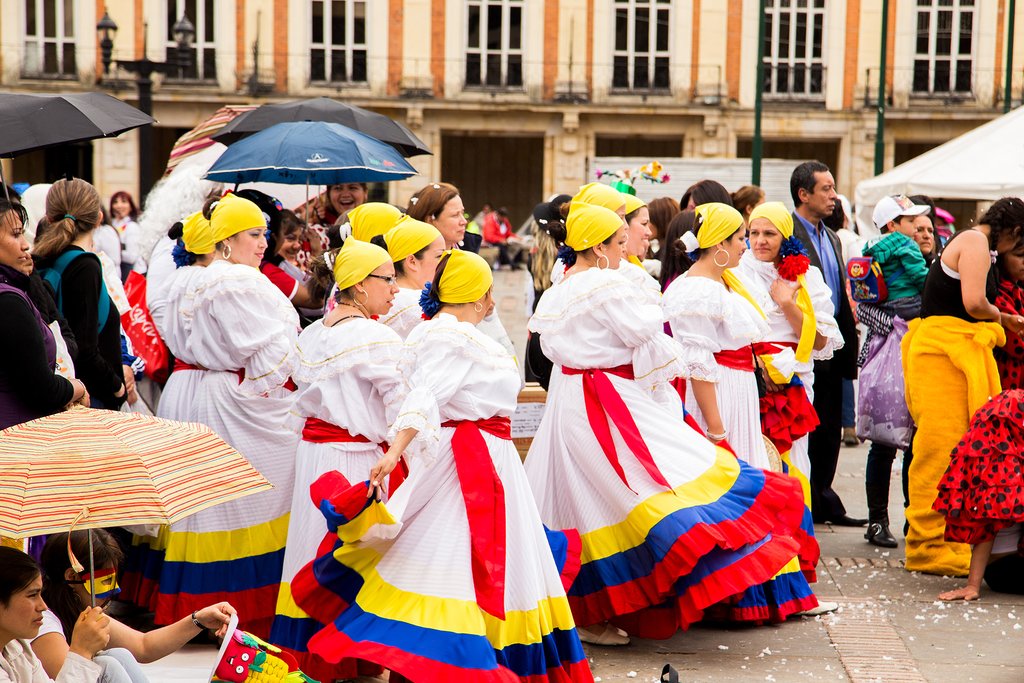
Throughout the year, the vibrant city of Bogotá plays host to a diverse array of special events and festivals, adding an extra layer of excitement and cultural richness. Many of these events are frequently held in the central hub of Plaza de Bolívar, offering both locals and visitors the opportunity to immerse themselves in the local traditions and festivities.
March / April
Santa Semana: The revered Holy Week, observed during the week preceding Easter, is celebrated with deep reverence and enthusiasm throughout the entire country. During this period, you have the unique opportunity to join the local community in a spiritual journey of church hopping. This involves visiting numerous churches and religious monuments, each offering a glimpse into the country’s rich religious heritage. Among the particularly notable places to visit during this time of year are the iconic Cerro Monserrate and the awe-inspiring Zipaquirá Salt Cathedral, each offering a distinct and enriching experience.
August
Salsa al Parque: This event showcases the infectious rhythms of salsa music and dance in the beautiful setting of Parque Simón Bolívar, attracting music lovers and dance enthusiasts from all walks of life.
Festival de Verano: A spectacular 10-day event filled with free music performances and diverse cultural activities, all taking place within the expansive grounds of Parque Simón Bolívar. The festival promises an enriching and entertaining experience for attendees of all ages.
September
Jazz al Parque: This prominent jazz event boasts an impressive lineup of both local and international jazz artists, offering a diverse range of jazz styles and sounds. This event is a must-attend for jazz enthusiasts and music aficionados alike.
October
Bogotá Film Festival: A prestigious film festival showcasing cinematic creations from around the world, with a particular emphasis on highlighting the talents and storytelling of local filmmakers. This festival provides a platform for discovering and celebrating the art of film.
Rock al Parque: This high-energy festival presents a vibrant mix of rock, reggae, and pop bands, all converging in the popular Parque Simón Bolívar. This event promises an electrifying atmosphere and a celebration of diverse musical genres.
December
Christmas and New Years are significant and widely celebrated holidays in Bogotá. Christmas tends to be a lively and festive party atmosphere, while the New Year holiday is more traditionally observed with close-knit family gatherings.
How many days do you need?
To truly immerse yourself in the essence of the capital city, it’s highly recommended that you plan for a minimum of two full days and three comfortable nights. With a single, dedicated day in Bogotá, you can effectively gain a comprehensive feel for the historic downtown area, allowing you to explore the remarkable sights and captivating museums that cluster around the iconic La Candelaria and the expansive Plaza de Bolívar. On a second day, consider embarking on a rewarding hike up the scenic Cerro de Monserrate and participating in an engaging graffiti walking tour of the downtown area. Additional days offer you the flexibility to explore the lesser-known yet equally captivating parts of the city and even venture out on a memorable day trip beyond the city limits.
Places to Visit & Things to Do
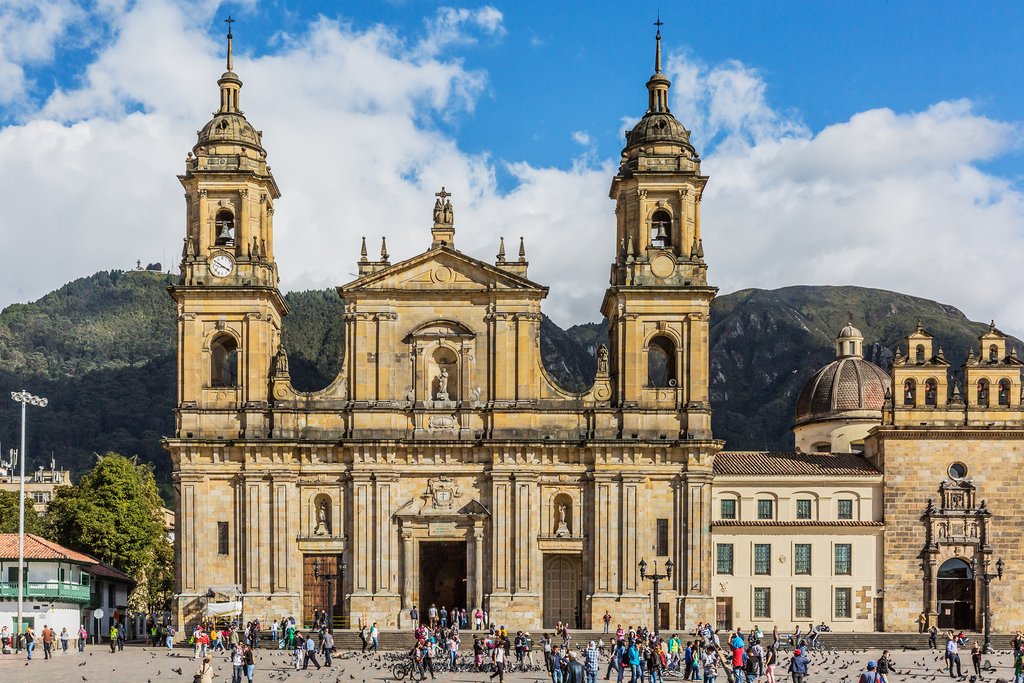
Bogotá possesses a treasure trove of historically significant sites and an impressive collection of museums, complemented by an abundance of exceptional restaurants and diverse entertainment options. The majority of the city’s attractions are conveniently concentrated around the charming La Candelaria district, situated in the heart of downtown. Must-see attractions and experiences encompass the renowned Museo del Oro (Gold Museum) and the captivating Museo Botero. Don’t miss the opportunity to partake in a unique and insightful graffiti tour of the city, and consider exploring the city’s streets on engaging biking tours. All these offer immersive and enriching experiences.
Once you’ve explored your initial list of places to visit within the city limits, it’s time to consider embarking on some captivating day trips to explore the many attractions in the countryside surrounding Bogotá. Many visitors opt for a day trip to the impressive Salt Cathedral at Zipaquirá, while others seek out the excellent hiking opportunities available in the surrounding landscapes. These excursions offer a delightful change of scenery and a chance to connect with nature.
For hiking enthusiasts, Monseratte and Quebrada La Vieja provide easily accessible hiking options within the city itself. Both locations benefit from a strong presence of local police, ensuring a safe and secure environment, and are conveniently located for easy access. While Monseratte tends to attract a larger number of tourists (with the added convenience of a cable car to reach the summit), Quebrada La Viega is a favorite among locals. These trails offer a chance to escape the urban hustle and appreciate the natural beauty of the region.
If you happen to be traveling with children, Bogotá presents a wide array of family-friendly activities that cater to all ages. And for those seeking memorable day trips in the surrounding area, there are many options to explore.
Security
While the vast majority of travelers experience Bogotá without any security-related incidents, it is always a wise decision to take sensible safety precautions before venturing out onto the city streets, particularly during the evening hours. Being proactive about your personal safety can greatly enhance your overall travel experience.
Exercise caution and remain vigilant for potential pickpockets, particularly in areas that are frequented by tourists, such as the historic La Candelaria district and the popular Cerro de Monserrate. Weekends offer a safer window to hike to Monserrate, as there is a greater sense of security in numbers, given that it is a favored weekend activity for Bogotanos. On weekdays, it is generally advisable to opt for the safer option of taking the cable car to the top, as it reduces the risk of encountering any potential safety concerns along the hiking trail.
As a standard precaution, adhere to the same safety measures you would typically observe in any major city. Keep your valuables securely stored in your hotel safe, and be cautious about accepting drinks from strangers while at nightclubs. For enhanced safety, make use of ATMs during daylight hours and opt for ATMs located inside secure locations, such as shopping malls or guarded bank branches.
When planning your routes around the city, it is highly recommended to consult with the knowledgeable staff at your hotel. They can provide valuable insights into the safer areas and help you avoid unintentionally straying into potentially unsafe neighborhoods. As a general guideline, the northern parts of Bogotá tend to be the safest areas of the city, whereas the southern neighborhoods carry a higher degree of risk.
Getting There & Away
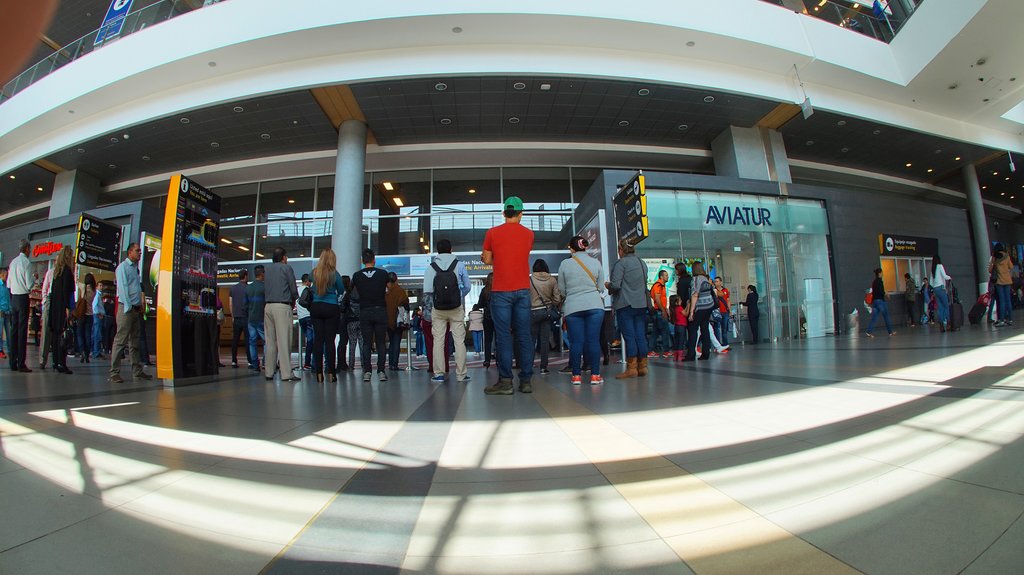
Bogotá’s recently renovated Aeropuerto Internacional El Dorado offers non-stop connections to a wide array of major cities across North America. The airport is located 13km northwest of the city center. However, due to the city’s often heavy traffic conditions, it can still take approximately an hour to reach the airport from the downtown area. Terminal 1, which houses a convenient tourist information center, efficiently handles all international flights. Terminal 2 primarily manages the majority of domestic air traffic within the country.
The main bus terminal, known as La Terminal, is situated 5km west of the city center in the neighborhood of La Salitre. This modern facility is clean, efficient, and is recognized as one of the best bus terminals in all of South America. While it is relatively large, potentially making it easy to get disoriented, the helpful staff at the tourist information kiosk are readily available to assist you in navigating the terminal. Regularly scheduled air-conditioned buses depart from La Terminal, providing convenient connections to destinations throughout the entire country. It’s worth noting that a small medical clinic located within the terminal offers complimentary yellow fever shots, making it particularly convenient for travelers who are planning a trip to Amazonia.
Transport Options in the City
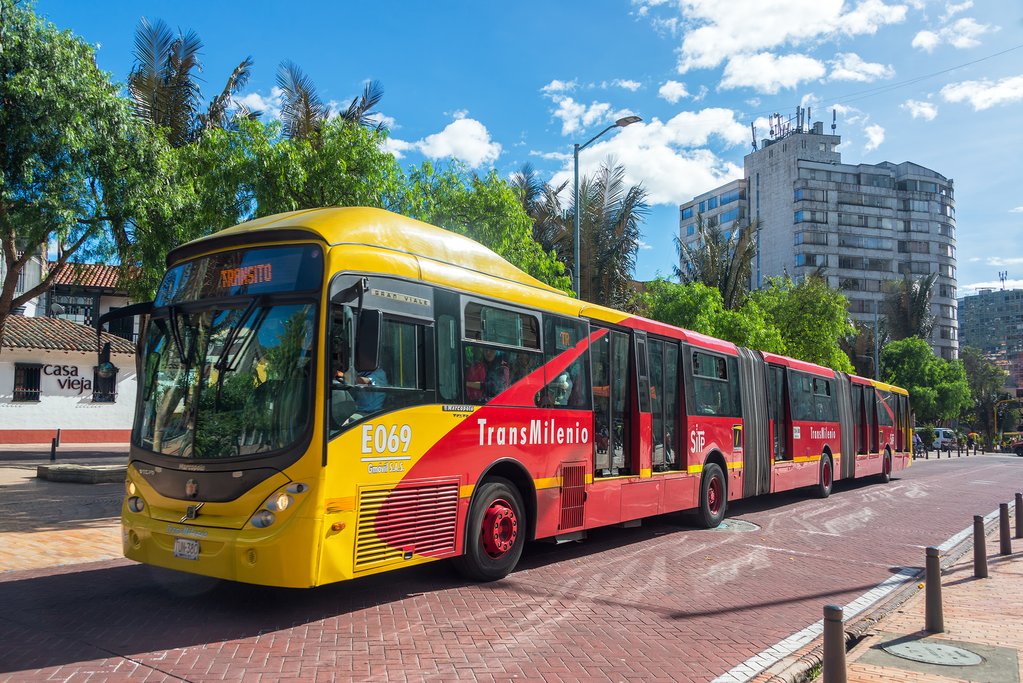
Bogotá has emerged as a pioneering city in the development and implementation of the BRT (Bus Rapid Transit) system. This innovative system entails the use of buses that operate on dedicated lanes, effectively isolated from regular car traffic. Think of it as an efficient above-ground subway system, but constructed at a significantly reduced cost. The TransMilenio BRT system operates along the city’s primary routes, while standard buses serve other areas. To help you plan and coordinate your routes effectively, you may find it helpful to utilize the MoviliXA app, which offers route planning assistance and real-time information.
Bogotá offers a readily available fleet of taxis, which are considered a safe and convenient option for transportation, particularly during late-night hours. Taxis operate using meters (although the meters display units rather than direct prices, with each unit representing approximately 82 Colombian centavos). The initial flag fall charge is around $1 USD, and fares tend to increase after dark. To ensure your safety, it is best to avoid unmarked cabs. Be aware that some drivers may propose a flat rate, so it’s wise to have a general understanding of the expected fare before entering the cab.
Cycling is a highly favored mode of transportation among the local residents of Bogotá, and bike rentals are readily accessible. With an extensive network of approximately 200 miles of dedicated bike lanes spanning the city, there are ample opportunities for navigating the urban landscape on two wheels. Opting for cycling can also serve as a great way to circumvent the often pervasive traffic delays.
Uber services are available in Bogotá (however, Lyft is not). It’s a good idea to ensure you have the Uber app downloaded and properly configured on your smartphone prior to your arrival. It’s worth noting that Uber’s operation is somewhat controversial within Colombia. For the most part, this does not pose a significant problem. However, when using Uber for transportation to or from the airport, it’s advisable to know your driver’s name and avoid openly mentioning the app, as this may potentially create issues for the driver.
Where to Stay
Bogotá presents a diverse spectrum of accommodation options, ranging from budget-friendly hostels and stylish boutique hotels to well-established major hotel chains. The majority of high-end hotels are strategically situated in the northern part of the city, while more budget-conscious options can be discovered in and around the historic La Candelaria district. This range of options ensures that travelers can find accommodations that align with their preferences and budgetary constraints.
Where to Eat
Bogotá is a gastronomic paradise, brimming with exceptional restaurants that serve an eclectic mix of local and international fare, as well as innovative fusion cuisine. There’s no shortage of excellent, locally-run burger outlets, and an impressive selection of Peruvian restaurants.
The Zona Rosa stands out as one of the premier districts in the city for high-end dining experiences. The heart of the action centers around Zona T, comprised of a couple of pedestrian-only streets. Located approximately 10 blocks to the north is Parque 93, which offers an additional array of upscale restaurants. Zona G, situated about 10 blocks south of Zona Rosa, presents yet more options for discerning diners. For those seeking a more budget-friendly dining experience, La Candelaria in the historic city center is home to an abundance of cafes and eateries.
Families in search of kid-friendly dining options will find a selection on this list of eateries. If you wish to indulge in a local dining experience, explore La Macarena, located just north of Centro, which has a thriving restaurant scene that is still largely undiscovered by tourists.
Probably the most famous restaurant in all of Bogotá is Andres Carne de Res, a renowned bar-restaurant serving generous portions of expertly grilled steaks and an extensive menu of creative cocktails. The wildly-decorated venue exudes a fun and festive atmosphere, so come prepared to indulge in drinking, dancing, and savoring delicious food.
B-406

